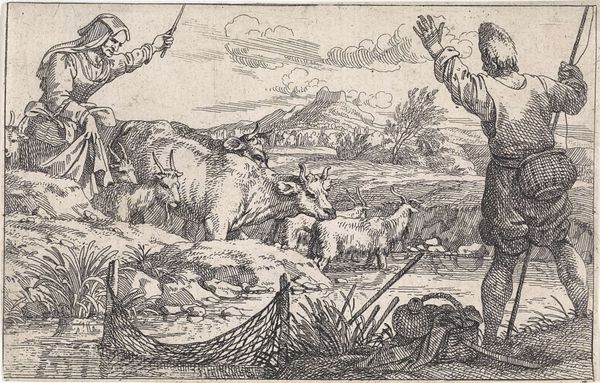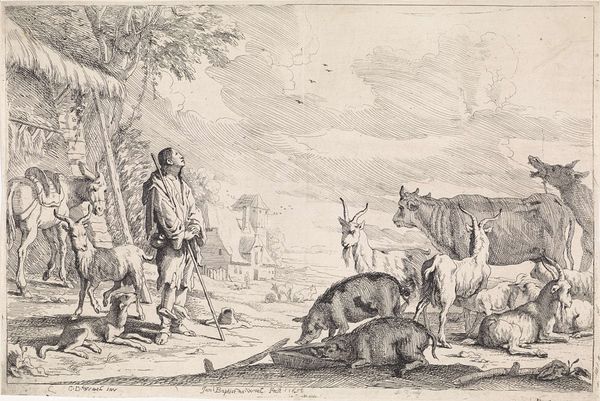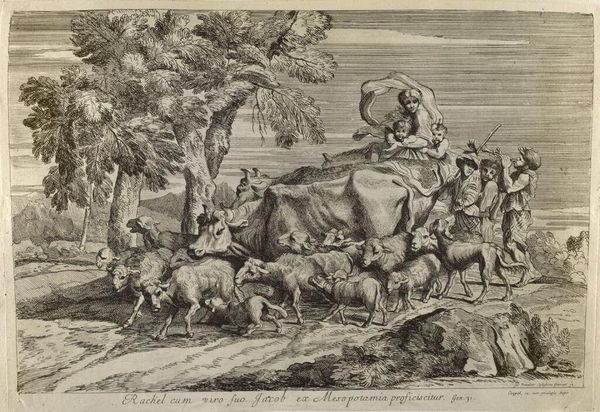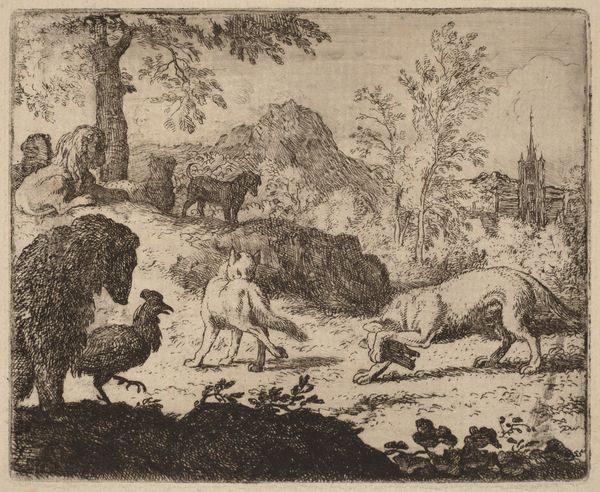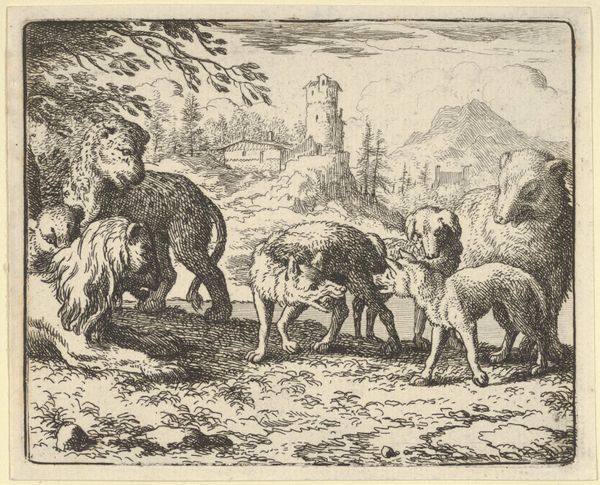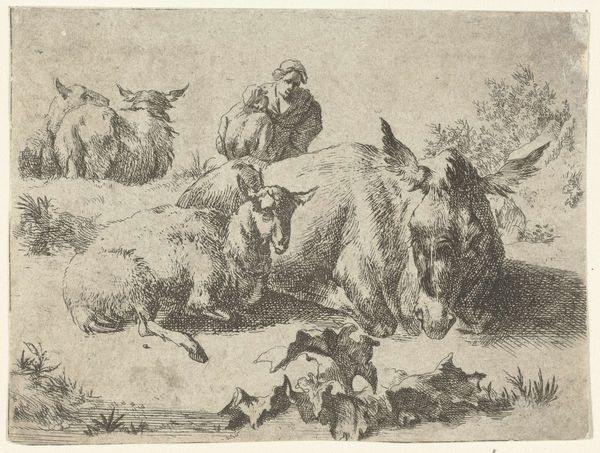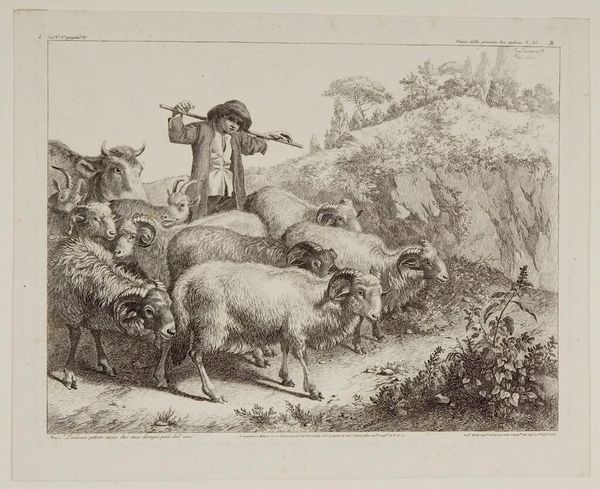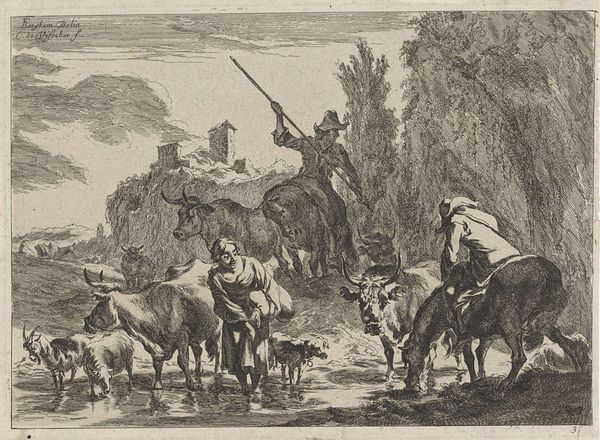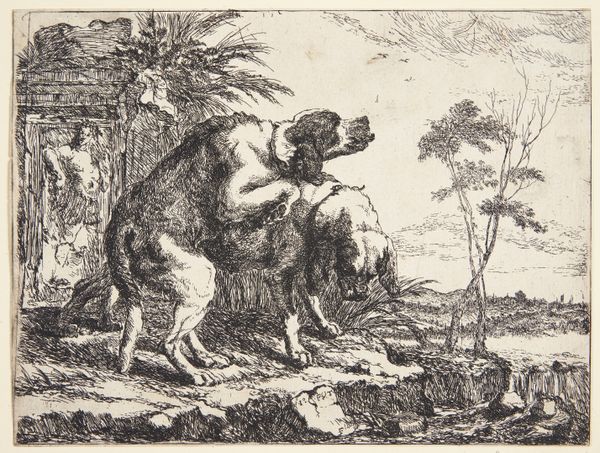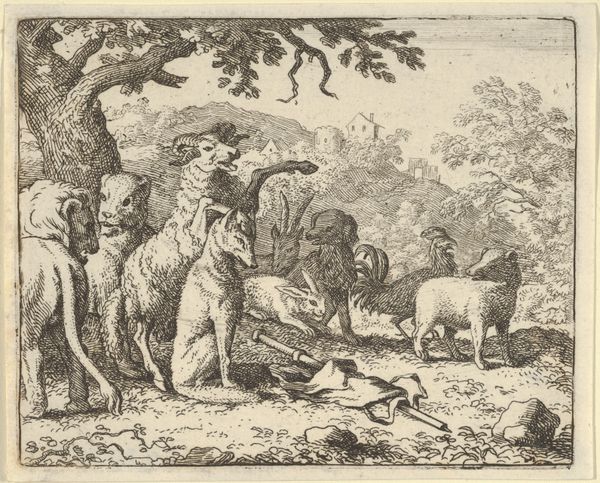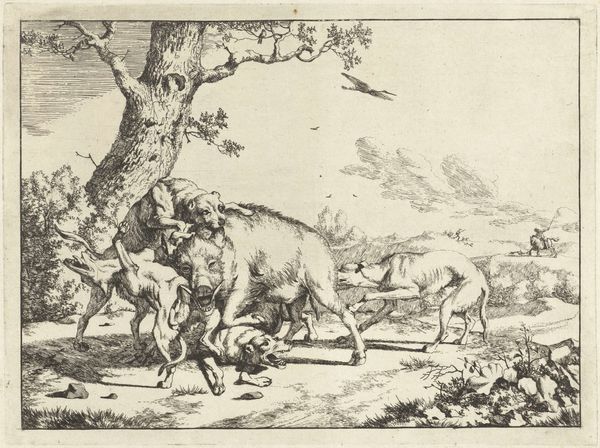
drawing, print, etching
#
drawing
#
dutch-golden-age
# print
#
etching
#
landscape
#
figuration
#
genre-painting
Dimensions: height 126 mm, width 178 mm
Copyright: Rijks Museum: Open Domain
Curator: Here we have Pieter van Laer's etching, "Spinnende vrouw, zwijnen en ezels," which translates to "Spinning Woman, Pigs, and Donkeys" created around 1636. It’s part of the Rijksmuseum's collection. Editor: It's captivating! The contrast is very stark. The foreground feels incredibly textured with those animals in such detail, while the background is this almost ethereal expanse. Curator: Van Laer, often associated with the "Bamboccianti," captured everyday life in Rome, depicting its marginalized figures. His work provides insights into social dynamics and identity in 17th-century Europe. Consider the position of the woman. Who might she be and how does the artist situate her in relation to her animal companions? Editor: Well, technically, her placement near the composition's center anchors the entire piece. Her gesture of spinning leads my eye through to the donkeys, doesn't it? And observe the detail on the pigs; you can almost feel the coarseness of their hair, really. How would that have been achieved in the print making process? Curator: Etching allows for that level of fine detail. Also, it's significant to remember how such images disseminated ideas and stereotypes. Are these romanticized views or representations of true hardship? It really makes you consider. What commentary is Van Laer making on gender roles and socioeconomic status in Rome? Editor: I'd also be keen to think about line. He utilizes a variety of them! The organic, flowing line contrasts the sharper, angled lines of the shack or building next to the animals. Look how the cross-hatching is applied so efficiently. Curator: Indeed. The strategic deployment of line weights builds layers of meaning beyond representation. I think it also forces us to ask ourselves how the context of production shapes our modern gaze, and if we risk replicating unequal dynamics through our consumption. Editor: This is the enduring value of artworks. These things aren't captured in a photograph! Okay, I think I understand much better the nuances. Thanks! Curator: Likewise. Hopefully this piece allows visitors a chance to explore power dynamics, representation, and their relationship with art.
Comments
No comments
Be the first to comment and join the conversation on the ultimate creative platform.

